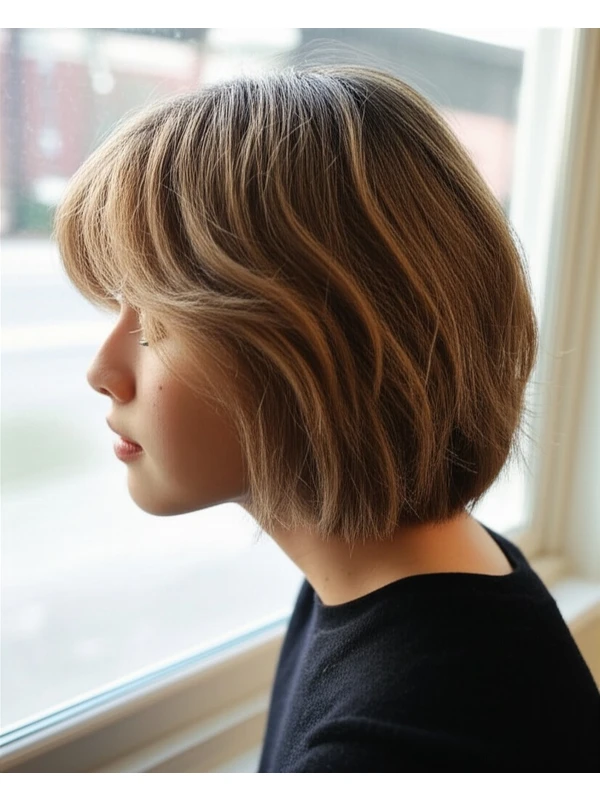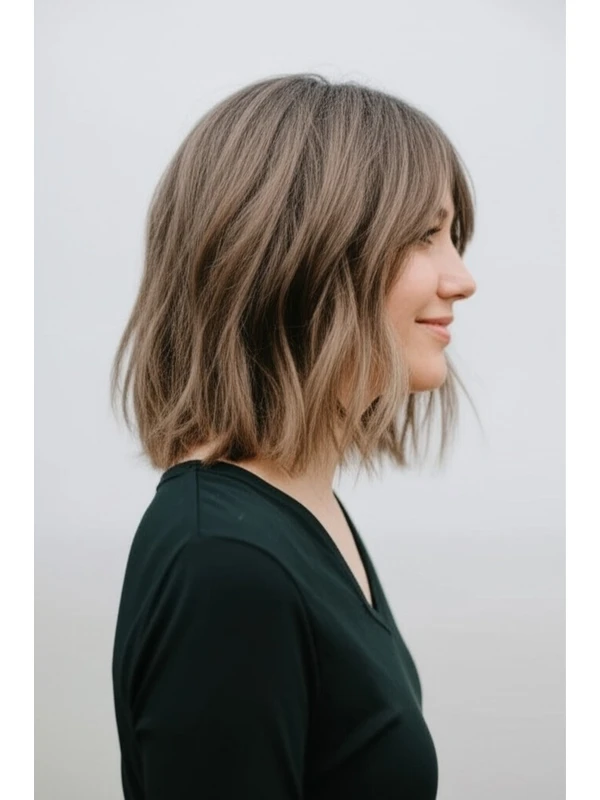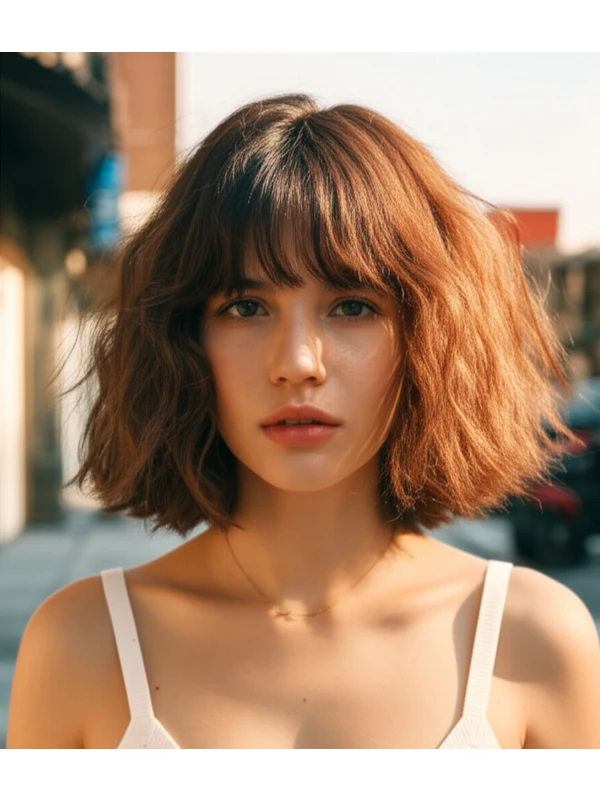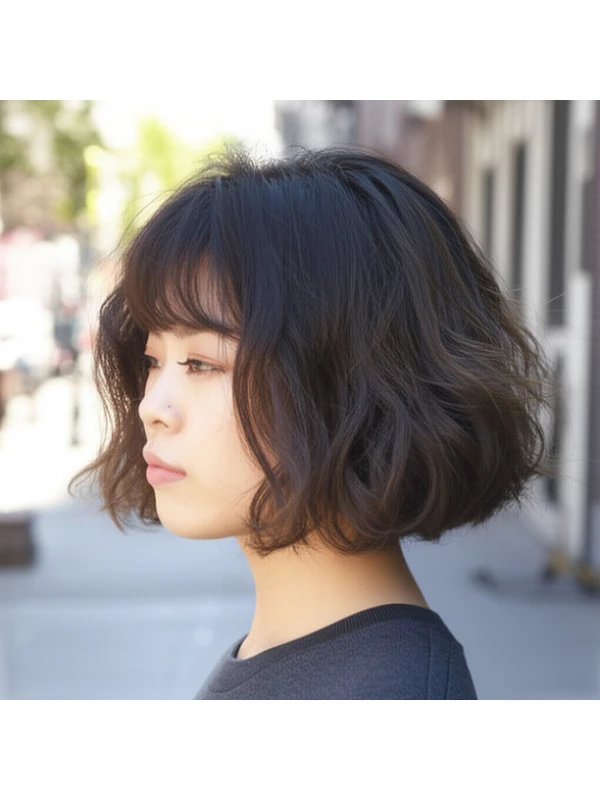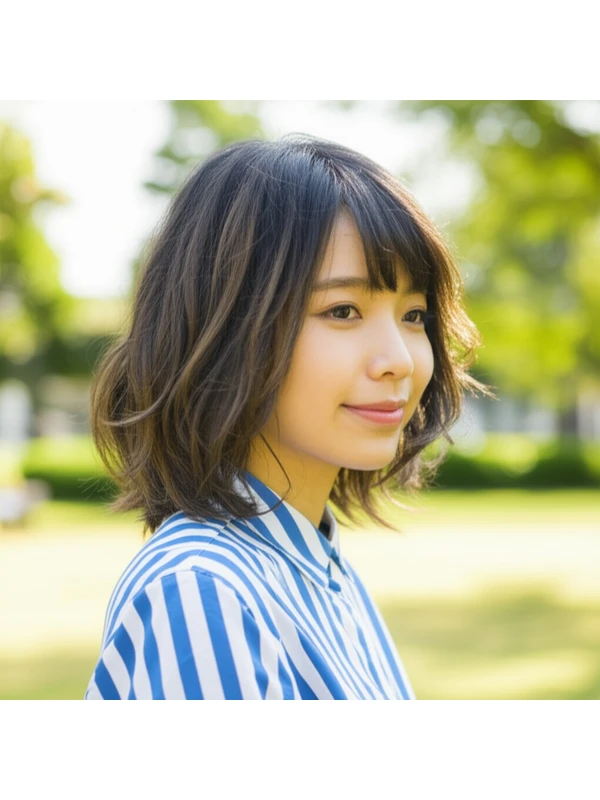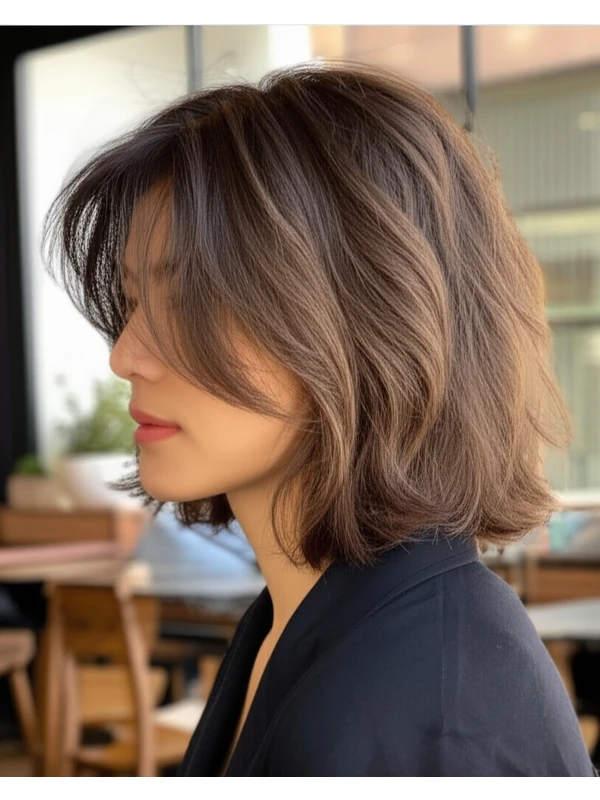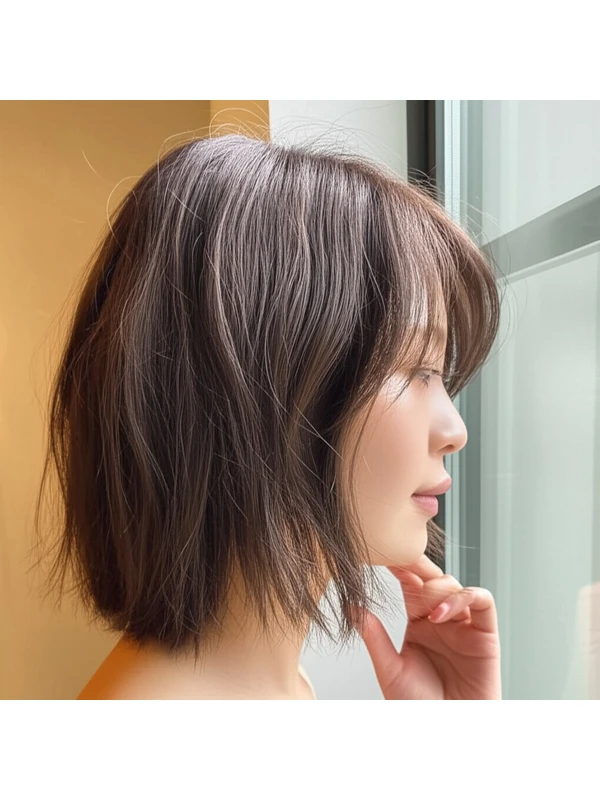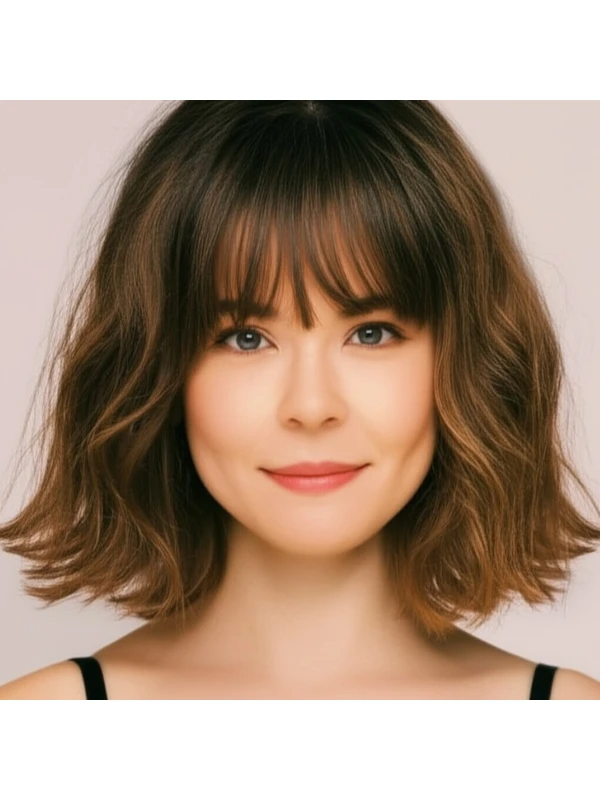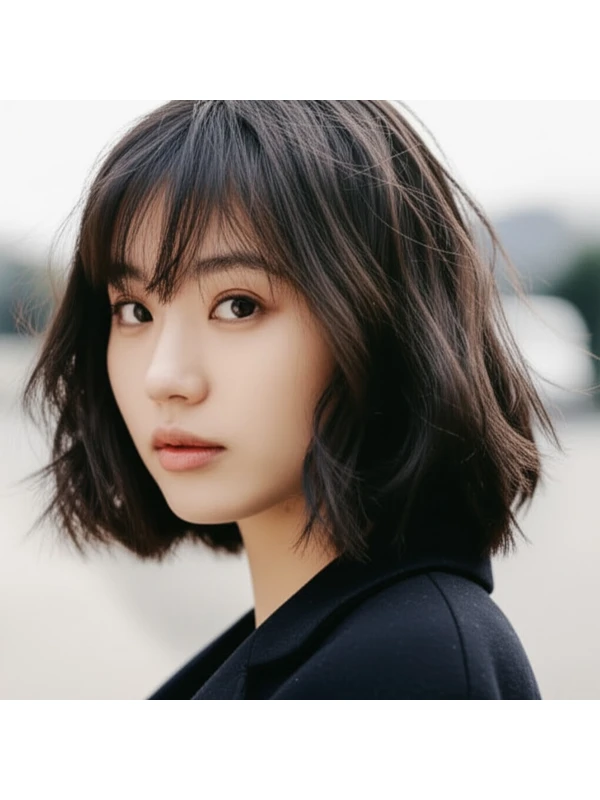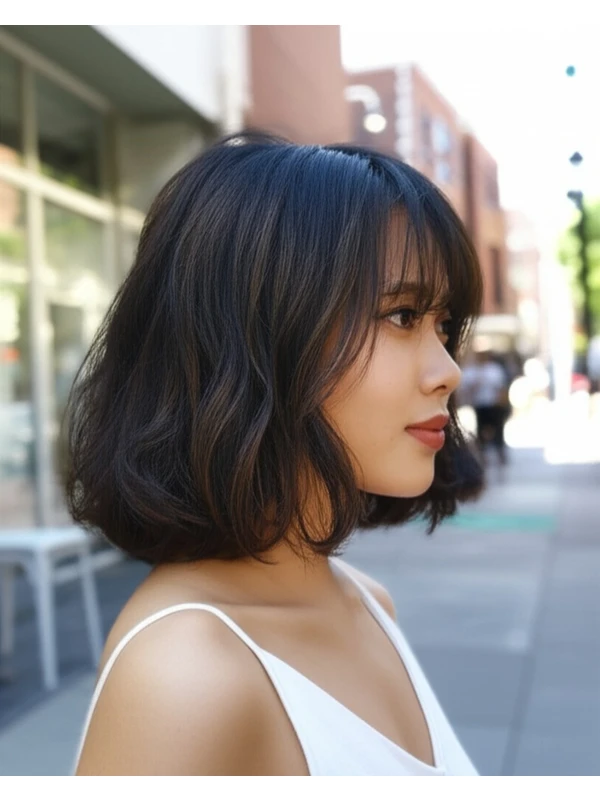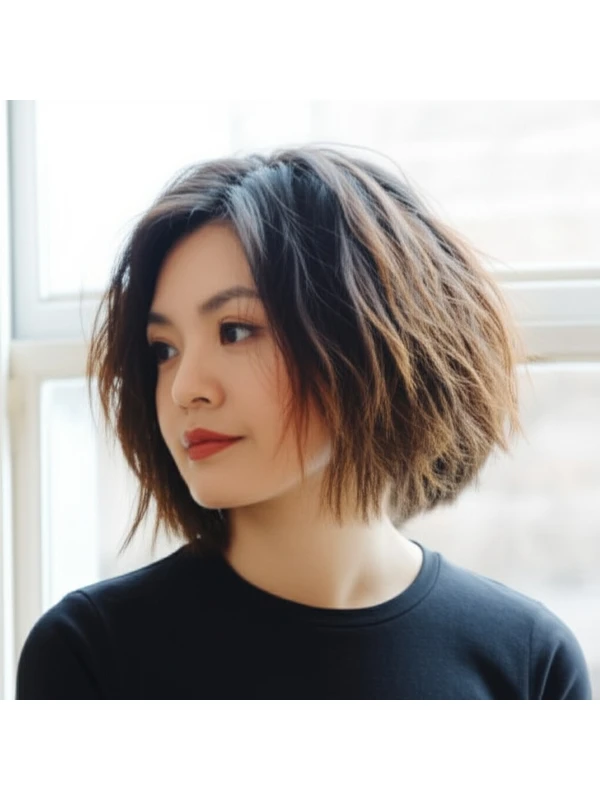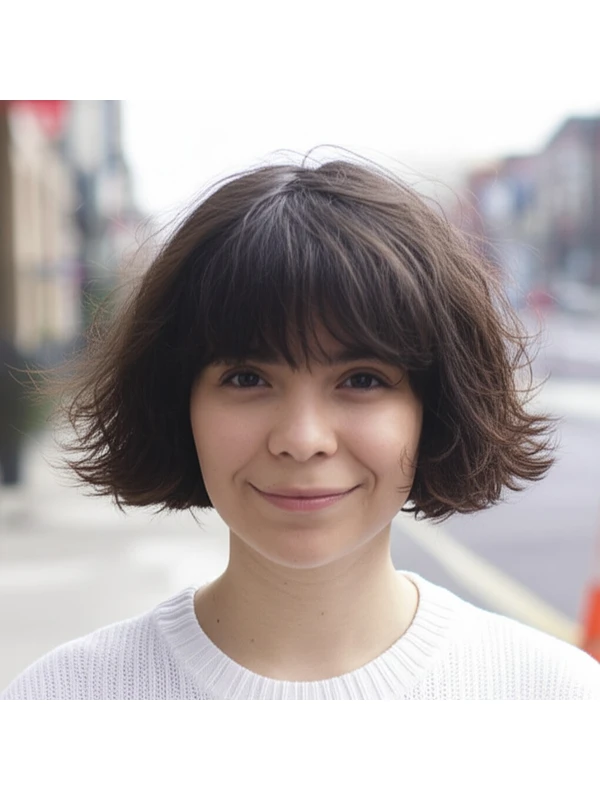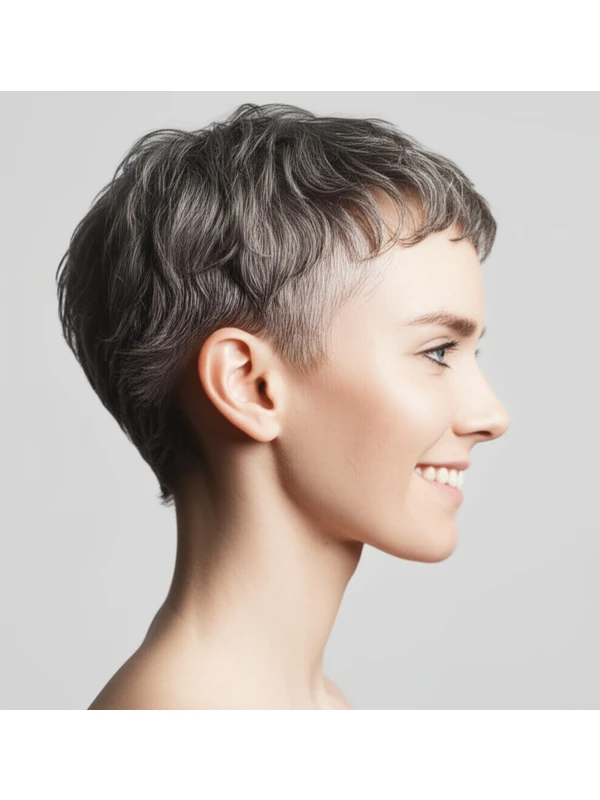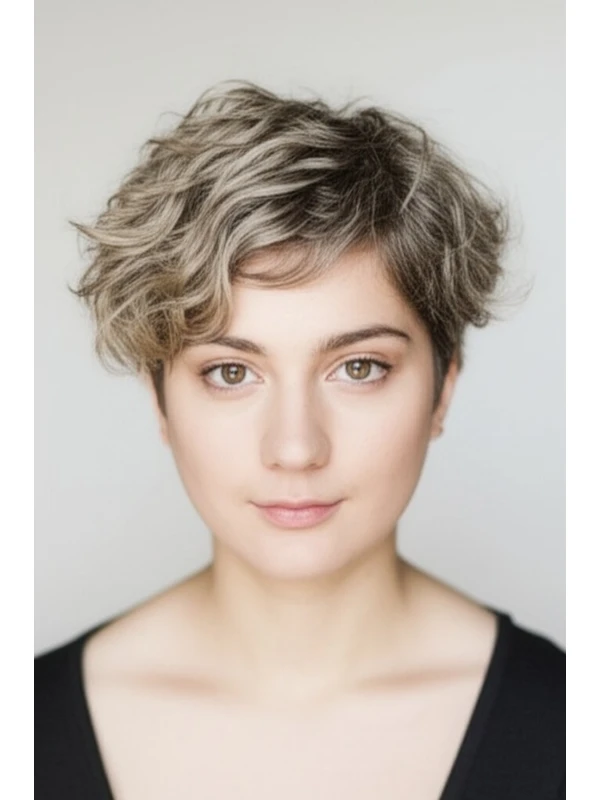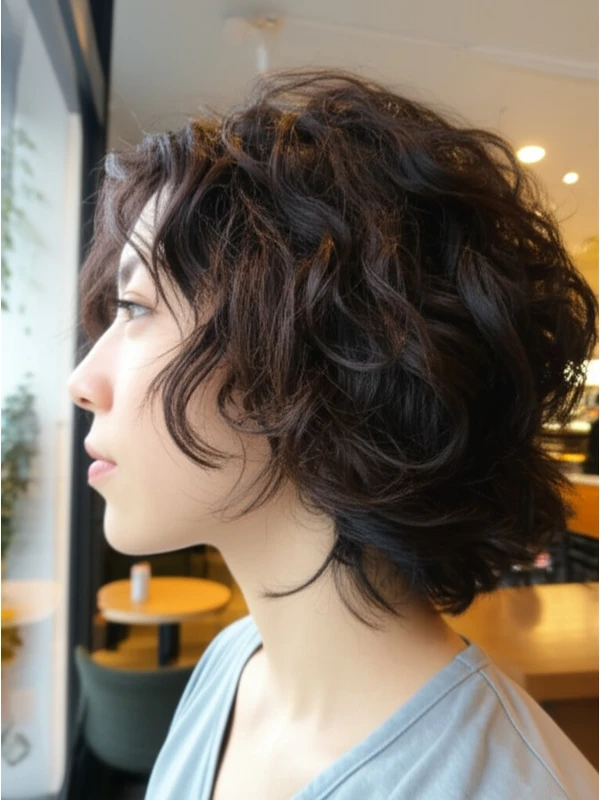#The Butterfly Cut: A Guide to Effortless Layers & Movement
The butterfly cut is the latest hairstyle trend taking over social media – and for good reason! It’s designed to create a soft, face-framing shape with lots of movement, resembling the delicate wings of a butterfly. This guide will break down everything you need to know about this popular style, from its origins to how it might work for you.
#1) Background & Definition: What is the Butterfly Cut?
The butterfly cut isn’t just one specific length or shape; it's more of a philosophy for layering. It prioritizes soft, blended layers that create volume at the crown and face-framing pieces around your cheekbones and chin. Think of it as an evolution of the shag – less choppy, with a focus on flowy movement rather than deliberate disconnection.
Key Features:
- Soft Layers: The hallmark of this cut is its seamless blending between lengths.
- Face-Framing: Layers are strategically placed to accentuate your features and soften angles.
- Volume at the Crown: Layers build lift and fullness at the top of the head, creating a flattering silhouette.
- Length Variation: The butterfly cut can be adapted for various lengths, but typically falls between mid-length (chin length or longer) to long hair.
Typical Length Ranges: Chin length to beyond shoulder length is most common. Shorter versions exist, but the key layering and volume are easier to achieve with more length.
Alternative Names: You might also hear it called a "soft layered cut," "layered flow," or simply “modern shag” (though be sure your stylist understands your vision).
#2) Face Shape Fit: Finding Your Butterfly Angle
The beauty of the butterfly cut is its adaptability, but certain features work best with different face shapes. Here's a breakdown:
- Oval: Lucky you! The butterfly cut generally flatters oval faces beautifully. You can embrace all the volume and movement without worry. A full fringe (blunt or curtain) adds extra softness.
- Round: Soft layers around the cheekbones and jawline are key to slimming a round face. Avoid too much volume at the sides, which can widen your features. A side-swept fringe is often more flattering than a blunt one.
- Square: The butterfly cut softens sharp angles. Longer, face-framing layers help balance strong cheekbones and jawlines. A wispy or curtain fringe helps to soften the forehead.
- Heart: Volume at the bottom of the style balances a wider forehead. Side-swept bangs can minimize width at the top. Avoid too much height directly at the crown, as it can exaggerate the heart shape.
- Diamond: Similar to square faces, focus on softening angles with layers that frame your face. A longer fringe or curtain bangs help lengthen and soften a diamond face.
- Oblong (Long): Create width by adding volume through layering at the sides of the head. Avoid styles that pull hair straight up, as this will elongate the face further. A shorter, wispy fringe can also help shorten the appearance of a long face.
#3) Body Proportions & Height Guidance: Tailoring the Silhouette
The butterfly cut isn’t just about your face; it impacts your overall silhouette too!
- Petite: Shorter to mid-length styles with less volume at the crown are generally more flattering, preventing you from being overwhelmed by hair.
- Average Height: You have flexibility! Experiment with different lengths and volumes to find what best suits your style.
- Tall: Longer versions of the butterfly cut work well, creating a balanced look. You can also play with more volume at the crown for added drama.
- Narrow Shoulders: Layers that add width around the face will visually broaden shoulders.
- Broad Shoulders: Avoid excessive volume directly over your shoulders; focus on layering to create movement and draw attention elsewhere.
- Short Neck: Mid-length styles are often best, avoiding lengths that fall too close to the neck and shorten it further. A longer fringe can also help elongate the neck visually.
- Long Neck: Longer layers will balance a long neck beautifully. You can play with volume at the crown for added fullness.
#4) Works Best With Hair Types & Densities: Finding Your Perfect Match
The butterfly cut is surprisingly versatile, but some hair types require adjustments.
- Straight Hair: Layers fall nicely and show off movement well. However, fine straight hair might need strategic layering to avoid looking stringy – ask your stylist for point-cutting techniques to create the illusion of thickness.
- Wavy Hair: The butterfly cut enhances natural waves! Layers will define wave patterns and add bounce. Consider a slightly longer length to allow waves to cascade.
- Curly & Coily Hair: This style can work, but communication with your stylist is crucial. Layers need to be carefully placed to avoid bulkiness or unevenness. Be prepared for shrinkage! What looks like shoulder-length in the salon might end up being shorter when dry.
- Fine Hair: Strategic layering and texturizing are key to creating volume without thinning out your hair too much.
- Medium Hair: The butterfly cut generally works very well with medium density hair, allowing for a good balance of layers and movement.
- Thick Hair: Layers will help remove weight and create shape. Ask your stylist about internal layering (layers within the layers) to reduce bulk without sacrificing overall volume.
Shrinkage Note: For curls and coils, remember that shrinkage is significant! Discuss desired length with your stylist after accounting for this.
#5) Styling Variations: From Casual to Chic
The beauty of the butterfly cut lies in its versatility.
- Sleek vs. Textured: Sleek styles are achieved with smoothing products and minimal texture. Textured looks embrace natural waves or curls, enhanced with texturizing sprays or sea salt mists.
- Middle vs. Side Part: A middle part creates symmetry; a side part adds softness and asymmetry.
- Fringe Variations: Blunt bangs offer boldness; curtain bangs are softer and more face-framing; wispy fringes add subtle interest.
- Occasion Styling: For casual days, air dry with a texturizing product. For the office, smooth out layers with a flat iron or round brush. For evening events, elevate the look with curls or waves using hot tools and shine serum.
#6) Maintenance: Keeping Your Wings in Shape
- Trim Cadence: Every 6-8 weeks to maintain shape and prevent split ends.
- At-Home Routine: Gentle shampooing (2-3 times a week), moisturizing conditioner, leave-in treatment for hydration.
- Heat vs. Air Dry: Air drying is ideal for preserving natural texture. Heat styling can create sleekness or enhance curls/waves but use heat protectant!
- Product Checklist: Shampoo & Conditioner (suited to your hair type), Leave-In Conditioner, Texturizing Spray (for textured looks), Smoothing Serum (for sleek styles).
- Estimated Daily Styling Time: 5-15 minutes, depending on desired style and natural texture.
#7) Grow-Out Roadmap: The Evolution of Your Style
- Months 1-3: The layers are most defined; shape is at its peak.
- Months 3-6: Layers start to blend more as hair grows out, requiring a trim to maintain the desired shape and prevent it from looking too heavy or shapeless.
- Maintenance Tip: Communicate with your stylist about how you're styling your hair between cuts so they can adjust accordingly.
#8) Color Pairings: Enhancing Your Butterfly’s Beauty
- Cool Undertones (Pink, Blue): Icy blondes, ash browns, and even subtle lavender tones complement cool skin tones beautifully.
- Warm Undertones (Golden, Peachy): Honey blondes, caramel highlights, and copper shades enhance warm complexions.
- Low-Commitment Options: Balayage or babylights add dimension without a harsh root line for easy grow out.
#9) Season & Occasion Guide: Styling Through the Year
- Spring/Summer: Embrace lighter textures – air dry, sea salt spray, and minimal styling products.
- Fall/Winter: Add warmth with richer tones; use smoothing serums to combat frizz from colder weather.
- Work: Sleek and polished styles are professional and put-together.
- Weddings/Parties: Romantic curls or waves add a touch of elegance.
#10) Cost & Time: Salon Expectations
- Salon Time: Expect to spend 1.5 - 2.5 hours in the salon, depending on hair length and complexity.
- Estimated Price Range: The cost will likely be higher than a simple trim – expect to pay within the mid-to-high range for this style.
#11) Pros & Cons: Weighing Your Options
Pros:
- Flattering face framing
- Adds volume and movement
- Versatile styling options
- Modern and on-trend
Cons:
- Requires regular trims to maintain shape
- Can be time-consuming to style (depending on desired look)
- May not suit all hair types/densities equally well
#12) Salon Consultation Script: Your Checklist for Success
When consulting with your stylist, consider asking these questions:
- "I'm interested in the butterfly cut. Can you show me examples?"
- “Based on my face shape and hair type, how can we adapt this style to best suit me?”
- "How much volume do you think I should incorporate at the crown?"
- “What kind of fringe would be most flattering for my face shape?”
- "How will this cut affect the length once it dries (especially if I have curly or coily hair)?"
- "Can we discuss a styling routine that fits my lifestyle and time constraints?"
#FAQs: Your Burning Questions Answered
- Is the butterfly cut hard to style? It depends! With practice, most people can achieve basic styles in 5-10 minutes. More complex looks require more skill and time.
- Can I get a butterfly cut with short hair? While less common, it's possible. The key is strategic layering to create the illusion of volume and movement.
- What if my hair isn’t thick enough for this style? Your stylist can use techniques like point-cutting and texturizing to add visual thickness.
- How different is the butterfly cut from a shag haircut? Both styles involve layers, but the butterfly cut tends to be softer and more blended than a traditional shag.
- Will this style make my hair look stringy? Careful layering techniques can prevent that! Discuss your concerns with your stylist during consultation.
- Can I do this at home? While possible for experienced DIYers, it’s best left to a professional to ensure the layers are balanced and flattering.
